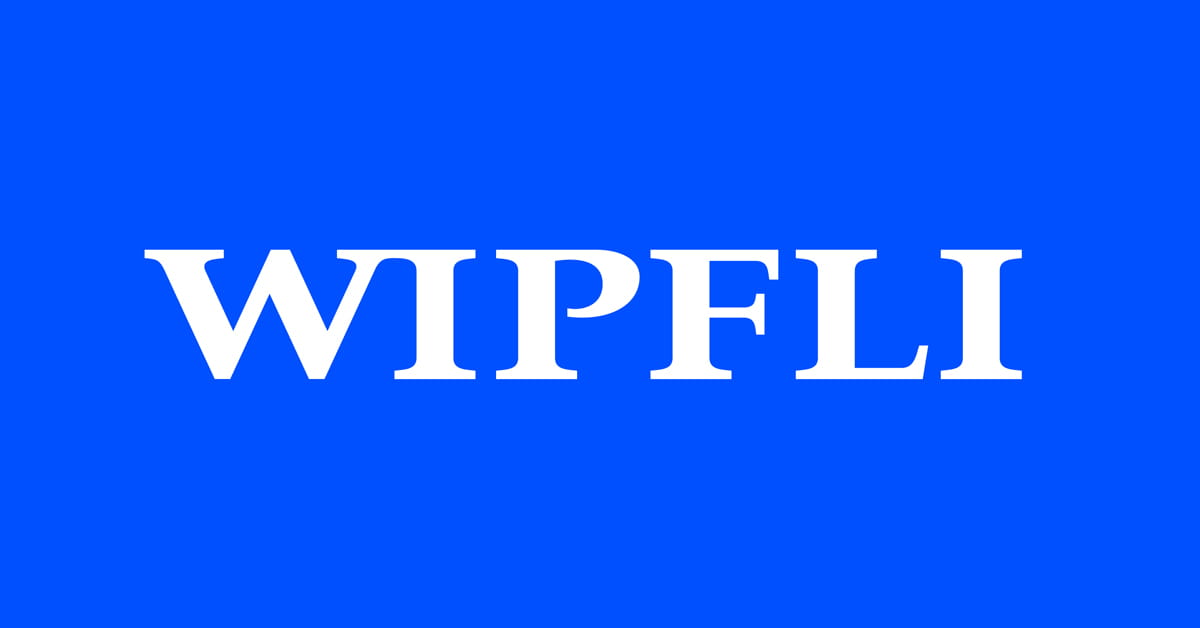Healthcare in 2030: Navigating change and challenges

As we look toward 2030, the healthcare landscape is poised for significant transformation. The integration of technology, shifts in funding and evolving patient expectations are just a few factors that will reshape how healthcare is delivered.
Some trends and predictions for the healthcare sector are emerging, which could shape the tenor of the coming decade. Some areas of focus include federal healthcare funding, revenue diversification, rural healthcare, federally qualified health centers (FQHCs) and senior living.
The shift in federal healthcare funding
One of the most pressing issues facing the healthcare industry is the anticipated reduction in federal healthcare funding. Over the next few years, healthcare providers may find themselves grappling with decreased financial support from government sources. This shift necessitates a reevaluation of financial strategies and operational models.
Understanding the implications
- Funding reduction: Healthcare organizations must prepare for a landscape where federal funding is less reliable. This could lead to a decrease in the services that can be offered, particularly in underserved areas.
- Impact on services: Fewer resources may result in longer wait times, reduced staff and limited access to specialized care, particularly in rural communities.
- Strategic planning: Organizations will need to develop strategic plans that account for potential funding shortfalls, emphasizing the importance of financial resilience.
Preparing for change
The only thing certain about the coming decade in the healthcare industry is uncertainty. You should proactively address these challenges by:
- Diversifying revenue streams: Exploring new avenues for income generation will be critical. This could include expanding service offerings or forming partnerships with private entities.
- Enhancing operational efficiency: Implementing technology solutions that streamline operations can help reduce costs and improve patient care.
Revenue diversification: A necessity for survival
With the looming threat of reduced federal funding, healthcare organizations are increasingly recognizing the importance of revenue diversification. This strategy involves creating multiple income sources to mitigate financial risks.
Some potential areas for diversifying your revenue streams include:
- Service expansion: Hospitals and clinics can explore expanding their service lines. For instance, integrating wellness programs or preventive care services can attract a broader patient base.
- Partnerships and collaborations: Forming alliances with other healthcare providers or community organizations can enhance service offerings and create new revenue opportunities.
- Telehealth services: The rise of telemedicine has opened up new revenue streams. By offering virtual consultations, healthcare providers can reach a wider audience while minimizing overhead costs.
- Wellness programs: Incorporating wellness initiatives, such as fitness classes or nutritional counseling, can attract patients seeking preventive care.
The future of rural healthcare
Rural healthcare faces unique challenges, including limited access to services and financial instability. As we approach 2030, it is essential to focus on innovative solutions to strengthen rural healthcare systems.
Access to healthcare has always been a concern in rural areas, and that gap is expected to remain as we approach the new decade. Organizations can attempt to bridge the gap in a number of ways, including:
- Telemedicine adoption: Telehealth can bridge the gap in access to care for rural populations. By leveraging technology, healthcare providers can offer consultations and follow-ups remotely.
- Mobile health clinics: Implementing mobile clinics can help ensure that healthcare services reach underserved areas, providing essential care where it is needed most.
Ensuring financial sustainability will be essential for rural healthcare providers. There are a number of avenues you can pursue to keep your organization financially viable, such as:
- Community partnerships: Collaborating with local organizations can help rural healthcare facilities secure additional funding and resources.
- Grant opportunities: Pursuing grants and funding from both public and private sectors can provide critical support for rural healthcare initiatives.
Federally qualified health centers (FQHCs): Adapting to change
FQHCs play a crucial role in providing care to underserved populations. As the healthcare landscape evolves, these centers must adapt to continue fulfilling their mission.
As trusted providers of comprehensive services, FQHCs are well-positioned to meet evolving needs — making it essential to prioritize planning and investment to help ensure their continued impact.
With potential reductions in federal support, FQHCs will need to explore alternative funding sources to maintain their operations. Embracing new care delivery models, such as integrated behavioral health services, can enhance patient outcomes and attract more funding.
Senior living: Evolving expectations
The senior living sector is evolving alongside a rapidly aging population. By 2030, 20% of the U.S. population will be 65 or older, and the 85+ group is projected to more than double by 2040. To meet these growing needs, healthcare providers must expand and adapt their services to support this demographic shift.
Seniors increasingly expect personalized care that caters to their individual needs and preferences. Utilizing technology, such as wearable devices and health monitoring apps, can help seniors manage their health more effectively while maintaining independence. Fostering connections between senior living facilities and the surrounding community can also enhance the quality of life for residents.
Doing more with less: Embracing efficiency
In an era of tightening budgets, healthcare organizations are compelled to find ways to do more with less. This requires a focus on operational efficiency and resource optimization.
Streamlining operations and optimizing your workforce will be essential over the next few years. As you work to make more efficient use of the resources you have available, a few strategies may help:
- Process improvement: Conducting regular assessments of operational processes can identify areas for improvement, leading to cost savings and enhanced patient care.
- Technology utilization: Implementing technology solutions, such as electronic health records (EHRs) and automation tools, can streamline administrative tasks and reduce overhead.
- Flexible staffing models: Exploring alternative staffing arrangements, such as part-time or on-demand workers, can help organizations adapt to fluctuating patient volumes.
- Training and development: Investing in workforce training can enhance staff capabilities, leading to improved patient outcomes and operational efficiency.
The role of technology in healthcare
As we move toward 2030, technology will play an increasingly vital role in shaping the healthcare landscape. From telemedicine to artificial intelligence (AI), innovations are set to transform how care is delivered.
Telehealth expansion will play a key role in the future of healthcare. Telehealth services can improve access to care, particularly for patients in remote areas or those with mobility challenges. Virtual visits can reduce costs for both patients and providers, making healthcare more affordable.
AI and data analytics are also emerging areas of technology that are set to have a big impact on the healthcare industry in the years to come. AI can assist in tasks like analyzing patient data to identify trends and predict health outcomes, enabling proactive interventions. It can also help in automating administrative tasks, which can free up staff to focus on patient care, improving overall efficiency.
Navigating regulatory changes
The healthcare industry is subject to constant regulatory changes, which can impact operations and funding. As we approach 2030, organizations must stay informed and adapt to these shifts. Here's how you can do so:
- Compliance requirements: Staying informed about evolving compliance requirements is essential to avoid penalties and maintain funding eligibility.
- Advocacy and engagement: Engaging with policymakers and industry groups can help healthcare organizations influence regulations that impact their operations.
- Proactive strategies: Developing proactive strategies to address regulatory changes can mitigate risks and help ensure continued compliance.
- Education and training: Providing ongoing education and training for staff can enhance understanding of regulatory requirements and promote a culture of compliance.
Building community partnerships
Collaboration with community organizations is crucial for healthcare providers seeking to enhance their services and reach underserved populations.
Partnering with local businesses, nonprofits and educational institutions can create a network of support for healthcare initiatives. Pooling resources with community partners can enhance service offerings and reduce costs. The best way to ensure a more equitable future for the healthcare industry is by sticking together.
Engaging with patients and families will play a key role in fostering this sense of community. These outreach efforts can raise awareness of available services and build trust within the community. Establishing channels for patient and family feedback can help organizations tailor their services to better meet community needs.
Embracing change for a healthier future
As the healthcare industry approaches 2030, it faces a myriad of challenges and opportunities. By embracing innovative approaches, diversifying revenue streams and focusing on patient-centered care, healthcare organizations can navigate the evolving landscape and continue to provide essential services. The journey ahead will require collaboration, adaptability, and a commitment to excellence, helping ensure that all individuals have access to the care they need.
How Wipfli can help
Is your healthcare organization ready for what’s coming next? At Wipfli, our team of dedicated professionals is actively engaged in preparations for the challenges ahead. We can help you develop strategic plans to tackle 2030 — and beyond — to meet the health needs of the next generation. Contact an advisor today to see how we can help.





